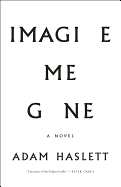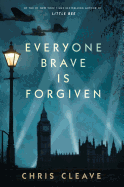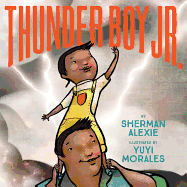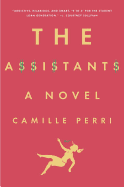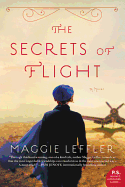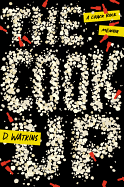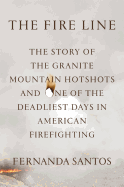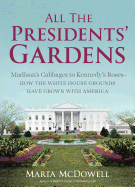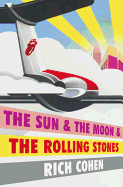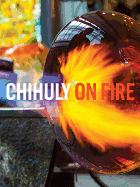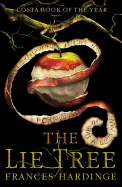Tuesday, May 10, 2016
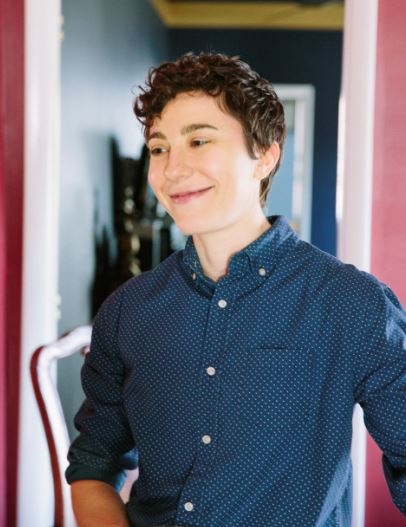 |
|
| photo: Ash Barhamand | |
Camille Perri discusses some of the bookish inspiration for her raucous novel, The Assistants (reviewed below), in which several young people with huge student loan debt discover an unusual way to repay their loans:
One of my first and most powerful inspirations came from Barbara Ehrenreich's now classic Nickel and Dimed: On (Not) Getting By in America, in which the author goes semi-undercover as a waitress, a hotel maid, a cleaning woman, a nursing-home aide and a Walmart sales clerk to provide a rare view of how prosperous America looks and feels from the bottom. In Hand to Mouth: Living in Bootstrap America, Linda Tirado builds on Ehrenreich's foundation by revealing in a brutally honest first-person account why poor people don't always behave the way the middle class thinks they should.
Tamara Draut blew my mind with her book Strapped: Why America's 20- and 30-Somethings Can't Get Ahead, which perfectly summed up everything I felt but couldn't verbalize about the economic obstacles facing my generation--most importantly that our predicament wasn't our own fault. I've been anticipating Draut's follow-up, Sleeping Giant: How the New Working Class Will Transform America.
This debate season, every time a candidate mentions campaign finance reform I'm thankful I read (no, devoured) Lawrence Lessing's 2012 book, Republic, Lost: How Money Corrupts Congress--and a Plan to Stop It, which convinced me that corporate interests wield outsize control over our legislature. Concerned? Check out Lessig's revised Republic, Lost: Version 2.0, updated for the 2016 election with 75% new material.
And while we're talking about the dysfunctional ways of Washington, I couldn't possibly leave out Elizabeth Warren's A Fighting Chance. There's a reason Warren has become a hero to all those who believe our government can do better for the middle class. This book tells it all.
Imagine Me Gone
by Adam Haslett
When a young writer's debut short story collection is a finalist for both the Pulitzer Prize and the National Book Award, the expectations for his subsequent work will be high. In Imagine Me Gone, his second novel, Adam Haslett (You Are Not a Stranger Here; Union Atlantic) takes another giant step toward fulfilling the promise of his earlier work with a story about mental illness and the devastating effect it can have on an utterly ordinary family.
Narrated in alternating first-person sections, Imagine Me Gone spans roughly four decades in the life of this unnamed family headed by John, the depressive father from England, and Margaret, his American wife. Their oldest son, Michael, seemingly inherits his father's condition, layered over with anxiety. After John dies early in the novel, the remainder of the story focuses on the efforts of Margaret, and Michael's siblings, Celia and Alec, to save him from catastrophe, while grappling with their own lives and loves.
Haslett has a keen eye for the civilized but unmistakable conflict that lies at the root of this family's life. John, Margaret and their children struggle, not out of any shortage of love for each other, but instead because of an inability, despite their best efforts, to express that love in effective ways.
Through his restrained, yet expressive prose, Adam Haslett gently reminds us of the infinite scope the intimate drama of family life offers to a novelist of his imposing talent. --Harvey Freedenberg, attorney and freelance reviewer
Discover: Adam Haslett's haunting second novel depicts an ordinary family struggling with the curse of depression.
Everyone Brave Is Forgiven
by Chris Cleave
"War was declared at eleven-fifteen and Mary North signed up at noon," begins Everyone Brave Is Forgiven, the magnificent and profoundly moving fourth novel by Chris Cleave (Little Bee).
Cleave draws from his grandparents' courtship amid the ravages of World War II in London and Malta to tell Mary's story. When war breaks out, Mary dreams of being a spy, but is assigned to teach school. When the children are evacuated to the English countryside, Mary persuades Tom, an education administrator, to give her a class of forgotten children to teach--those who are handicapped, or black, or who refuse to leave or are rejected by their host families. The experience awakens in her indignation at the casual racism and elitism of her peers, and sparks a love affair with Tom, who has decided to remain in London to teach while his best friend and flatmate, Alistair, enlists. Tom is sweet and dependable but no match for Mary's spirited convictions. Their mismatch is compounded by their youth and, later, by Mary and Alistair's mutual attraction, after they meet while Alistair is on leave.
Cleave writes his characters with immense compassion. Mary and Alistair eagerly sign up for their respective war efforts with the soaring, adventuresome idealism of youth, and Tom tries hard to do the right thing for his students. Their naïve decisions at times result in awful consequences, but they are the choices of profoundly decent people. These flawed but unforgettable characters come to know that bravery is not just what happens on the battlefield; to live and to love require it, too. --Jeanette Zwart, freelance writer and reviewer
Discover: This dazzling novel of World War II is full of unforgettable characters and keen emotional insights like those that moved readers of the author's Little Bee.
The Assistants
by Camille Perri
On the 40th floor of his Midtown Manhattan headquarters, mass communications kingpin Robert Barlow is a larger-than-life composite of every media gazillionaire in New York City. Outside his door sits his smaller-than-life executive assistant, Tina Fontana, a daughter of Italian grocers in the Bronx who put herself through New York University to earn an English degree and $20,000 in student loan debt. She is the focus of Camille Perri's first novel, The Assistants.
As the big boss, Robert's expense reports don't get much scrutiny, so when she inadvertently submits one under her name and is reimbursed with a check for $20,000, she falls into temptation and uses the money to pay off her debt. Emily, another assistant working in the audit department, catches the error and confronts Tina--not with exposure and possible termination for theft, but with a request that she continue gaming the system to skim enough money to pay off her student debt. Soon the head of accounting, Margie, uncovers their scam, but also gives them a pass if they work the same process to pay off her assistant's student loans. And this is how a quasi-altruistic Madoff/Ponzi scheme takes root.
It's great fun, and Perri (former books editor for a magazine and a YA ghostwriter) freewheels enough millennial savvy, parenthetical asides and clever repartee to give Girls a run for its money. Some jokes miss, but they keep coming (like a good Simpsons episode), so the misses don't much matter. Her set-up is too sweet to quibble over details. Rather, we should just sit back and let a smart, funny writer entertain. --Bruce Jacobs, founding partner, Watermark Books & Cafe, Wichita, Kan.
Discover: In Perri's raucous debut novel, a media mogul's smart young assistant accidentally creates a scheme to skim expense account money to cover her and her colleagues' student loan debts.
The Secrets of Flight
by Maggie Leffler
Mary Browning has kept her past hidden for many years. Though she runs a writers' group at her local library in Pittsburgh, Pa., she's never written a word of her own. But on Mary's birthday, Elyse Strickler--the spitting image of Mary's long-dead sister, Sarah--joins the writers' group. Taking it as a sign, Mary hires the teenager to type her memoir, and the two strike up an unlikely friendship. Maggie Leffler (The Goodbye Cousins) weaves a captivating story of family, love and conflicting loyalties in her third novel, The Secrets of Flight.
Leffler writes in both Elyse's and Mary's voices, switching between the present day and Mary's experiences during World War II. A member of the civilian Women Airforce Service Pilots (WASP) program, Mary (then known as Miriam Lichtenstein) honed her piloting skills at an air base in Sweetwater, Tex. There, she bonded with her fellow "fly girls" and met a man named Solomon Rubinowicz, whose dreams of being a doctor would change both his life and hers.
Leffler's narrators are thoughtfully crafted: readers will smile over Mary's wry humor and Elise's eye-rolling teenage angst. Leffler also deftly evokes the details of life in the 1940s: food and gasoline rationing, the frustration of limited career choices for women. But the novel is strongest in its sensitive exploration of following one's dreams, which--like flying a plane--can include both spine-tingling excitement and a high personal cost. Leffler's narrative carries readers on a journey both thrilling and satisfying. --Katie Noah Gibson, blogger at Cakes, Tea and Dreams
Discover: An elderly woman finally decides to share the story of her long-hidden career as a "fly girl" during World War II.
She: Fiction
by Michelle Latiolais
For the 15-year-old evangelically raised and home-schooled runaway of Michelle Latiolais's novella She, stepping off the bus from Needles, Calif., is like "the stone being rolled away from the sepulchral door... and emerging into the sunlight and into the huge blue Los Angeles sky." She carries only a pink backpack with her grandmother's wallet, a toothbrush, toilet paper, a needle and thread, and a card for a runaway hotline. A leather-jacketed man in worn cowboy boots lets her share his cab to Santa Monica, where she exits on Ocean Ave. Naïve perhaps, but determined and practical, the unnamed girl ("one of the small unnamed shes of the field and of the sky") sets out to find food and shelter. Like the angels of the city's name, a string of mostly good-hearted but often disconnected and slightly off-plumb locals steps up to help--a cop who rousts her for identification but lets her go, a gallery owner needing her hem mended, a grieving man with a sink full of dirty dishes to clean, a homeless woman at a bus stop with a suitcase full of paperbacks to give away, an overworked freelance cake decorator looking for a helper.
Co-director of the UC-Irvine writing programs, Latiolais has published both novels (A Proper Knowledge) and stories (Widow). In She, the chapters of the eponymous novella are separated by nine other stories, demonstrating the best of both worlds. The effect of this intriguing structure and Latiolais's precise writing is a rich portrait of the quirky life of the "Lotus Land" city where some go to find freedom and others strive to exercise it. --Bruce Jacobs, founding partner, Watermark Books & Cafe, Wichita, Kan.
Discover: Effectively weaving stories among chapters of a novella, Michelle Latiolais displays a keen eye for the human flotsam and jetsam of greater Los Angeles.
Biography & Memoir
The Cook Up: A Crack Rock Memoir
by D. Watkins
Journalist Dwight "D." Watkins (The Beast Side) grew up in East Baltimore, Md., worshipping his drug kingpin big brother, Bip. His story begins when Bip is shot dead in a neighborhood bodega, and D. "inherits" Bip's safe, containing $100,000 cash ("thick, wrinkled, tatted, bulky, and fluffy--every dollar has a story"), several guns, two bricks of cocaine and heroin, and a Michael Jordan rookie card. He recruits a neighborhood crew to cook up some primo crack and sell it on the corner of Ashland and Madeira. Because they start up the business with no-cost product ("hood trust-fund babies"), the cash comes rolling in. D. takes care of himself and his boys: "My whole hood was fresh from head to toe--it looked like a Macy's and Foot Locker warehouse had exploded."
The Cook Up: A Crack Rock Memoir rings authentically with the sounds of Watkins's turf--the gunshots, the music, the slang. Through sheer personal will, the love of a woman, and the advice of his dying wholesaler Old Head ("Ain't no 401K for smack dealers, boy"), Watkins leaves the drug life to study his way to advanced degrees in education and creative writing. The obstacles to exit are formidable: "We start out in the hood that's full of junkies and dealers. The cops are racist and the teachers only show up to get paid," and most of his crew just can't jump the hurdles. Watkins's memoir is a compelling story that TV entertainment can't touch. --Bruce Jacobs, founding partner, Watermark Books & Cafe, Wichita, Kan.
Discover: Journalist D. Watkins tells the street-smart story of his drug-dealing days in East Baltimore and how difficult it was to get out.
Nature & Environment
The Fire Line: The Story of the Granite Mountain Hotshots and One of the Deadliest Days in American Firefighting
by Fernanda Santos
On June 30, 2013, 19 firefighters died while fighting an Arizona blaze named the Yarnell Hill Fire. Fernanda Santos, Phoenix bureau chief for the New York Times, explores those 19 lives and the period surrounding their deaths in The Fire Line: The Story of the Granite Mountain Hotshots and One of the Deadliest Days in American Firefighting. She relates this affecting story with respect, momentum and surprising suspense, considering the outcome is known from the beginning.
Despite her apparent closeness to the surviving families and her immersion in her research--among other exercises, she undergoes some wilderness firefighter training--Santos sticks to a journalistic narrative and does not place herself in the story. She describes the Granite Mountain Hotshots and their work: physically hard, underpaid, dirty, but also hard-won, honorable, exciting and close to nature. She introduces the young men succinctly but with touching fine points: one grew up learning about firefighting at his grandfather's knee, one got teased for his "big calculator wristwatch," another carried a copy of Goodnight Moon to read to his daughters over the phone when he was away fighting fires. Intimate identification with these men is central to the emotional impact of the book, and Santos builds that closeness naturally as she characterizes them.
She brings immediacy and familiarity to a larger-than-life disaster with quiet admiration and loyalty to truth. By the time the Granite Mountain Hotshots, men now familiar to the reader, go missing, the tragedy of these losses is deeply felt. --Julia Jenkins, librarian and blogger at pagesofjulia
Discover: A journalist's in-depth account of the tragic loss of 19 firefighters in an Arizona wildfire in 2013.
Gardening
All the Presidents' Gardens: Madison's Cabbages to Kennedy's Roses--How the White House Grounds Have Grown with America
by Marta McDowell
The White House in Washington, D.C., sits on 18 acres above the Potomac River, a site selected by George Washington, who never saw the house or gardens completed. Not that they ever stayed complete for long: like much of the United States, this residence has been regularly rebuilt and renovated ever since the first gardens were installed in 1809, then torched along with the house by British soldiers in 1814.
"The White House gardens mirror the country's horticultural aspirations over time," writes garden historian Marta McDowell (Beatrix Potter's Gardening Life). This premise allows her to skim through most of the history of United States gardening in All the Presidents' Gardens. These gardens have led and followed fashions, and been altered by the influential landscape architects and plant breeders of every period. This book is full of interesting facts and anecdotes: the sheep that mowed the lawns as late as World War I, John Quincy Adams's morning dip in the Potomac, Helen Taft's cherry trees, the decline and rebirth of the kitchen gardens, and Teddy Roosevelt's son roller skating into a presidential meeting with an armload of snakes. There is a variety of beautiful and informative illustrations on almost every page, a good index, and appendices of gardener biographies, plant lists and recommended reading. Gardeners and fans of cultural history will enjoy this book, the more so since McDowell avoids politics, writing: "whether gardeners lean right or left, blue or red, we are united by a love of green growing things and the land in which they grow." --Sara Catterall
Discover: An informative and entertaining overview of the history of gardening in the United States as viewed through the changing White House grounds.
Performing Arts
The Sun & the Moon & the Rolling Stones
by Rich Cohen
Who could resist Keith Richards's 2010 autobiography Life--that candid voice from the man who for 10 years was number one on a "rock star most likely to die" list? Like many, journalist and longtime Rolling Stones acolyte Rich Cohen (The Fish That Ate the Whale; Monsters) holds Keith in special reverence. The Sun & the Moon & the Rolling Stones is his history of "the world's greatest rock and roll band"; it's also a memoir of a rock 'n' roll life that began at Cohen's birth in 1968 just as the Stones were hitting the top of their game. When Rolling Stone magazine assigned him to report on the 1994 Voodoo Lounge tour, he jumped at the chance: "It was akin to my childhood dream of running off with the circus... I was at the center of the best party in the world."
The tour is background to a thoroughly researched, funny and personal story of what Cohen calls "a revolution with ten hands, four chords, and a groove... not a band--a gang, a pack of junkyard dogs." Their obsession with African-American blues created a new basis for rock where "every guitar lick should have a hint of Chuck Berry, as every martini should have a hint of vermouth." Cohen covers it all--the music, the drugs, the bickering, the tours, the busts, the women, the tax dodging, the tragedy of Altamont. However, this is also Cohen's life. He might not have the gnarly voice of Richards, but Cohen is equally entertaining--and probably more accurate. --Bruce Jacobs, founding partner Watermark Books & Cafe, Wichita, Kan.
Discover: Rich Cohen's fresh history of the Rolling Stones is a personal rock and roll memoir that covers the band's long life with candor, humor and a little awe.
Art & Photography
Chihuly: On Fire
by Henry Adams and Dale Chihuly, Mark McDonnell, editors
For followers of renowned glass artist Dale Chihuly, this lavishly illustrated overview of four decades of the master's work is a detailed resource and a delight to peruse. For anyone unfamiliar with Chihuly's glass art, Chihuly: On Fire is likely to covert them to fans.
Chihuly's works, created by teams he leads, are exhibited worldwide. With 166 full-color plates, this coffee-table book features two-page spreads of Chihuly's pieces, full-page photos and snapshots, including pictures of artists at work in various studios, primarily the Seattle Boathouse and Pilchuk Glass School in Stanwood, Wash. In just 32 pages of the 212-page work, art historian Henry Adams summarizes Chihuly's life and his 11 "series" of blown-glass art, the latest developed in 2013. Adams's essay is technically detailed yet accessible to the unschooled, and reveals Chihuly's passion and inspiration.
"Cylinders," Chihuly's first series, was inspired by Native American blanket designs. His early training was in weaving, and he returned to this theme in "Baskets." Next came "Seaforms," followed by "Macchia," "Persians," "Ikebana," "Jerusalem Cylinders" and more. While the series' titles suggest a simplistic interpretation, each iteration of glassblowing was unusual and more challenging.
Although Adams notes that "no text can quite convey the fire, heat and implicit danger--as well as the creative excitement, suspense, and improvisation--of one of Chihuly's glassblowing sessions," the narrative and the breathtaking photos (works are depicted against a solid black background) in Chihuly: On Fire effectively bring the magnificence of the art to the reader. --Cheryl Krocker McKeon, manager, Book Passage, San Francisco
Discover: This breathtaking coffee-table volume offers an overview of iconic blown-glass artist Dale Chihuly's life and work.
Children's & Young Adult
Thunder Boy Jr.
by Sherman Alexie, illus. by Yuyi Morales
Novelist and poet Sherman Alexie, who won a National Book Award for his semi-autobiographical YA debut, The Absolutely True Diary of a Part-Time Indian, makes his picture-book debut with Thunder Boy Jr., illustrated by Mexico-born Yuyi Morales, four-time Pura Belpré winner and the Caldecott Honor artist behind Viva Frida.
Alexie tells the playful and profound story of Thunder Boy Smith Jr., a Native American boy who adores the dad he's named for, but still wishes he could have his own name. The "Big Thunder"/"Little Thunder" as father/son distinction isn't working for him, either. ("That nickname makes me sound like a burp or a fart," he says.) Why can't he be given a name, as is a generations-old Native American tradition, that celebrates something he's achieved on his own--something specific to him? "I once climbed a mountain," Thunder Boy says, "so maybe my name should be TOUCH THE CLOUDS." He would even prefer the name "MUD IN HIS EARS" (because he loves playing in the dirt) or "GRAVITY'S BEST FRIEND" (because he used to fall off his bike).
While Alexie tells the story of Thunder Boy's search for individuality with humor and real emotion, Morales takes the boy's dreamy, name-related musings and shoots them into the stratosphere with her electrifying illustrations. Exuberant dreamscapes, circles and thundering skies are all awash in vivid, saturated colors and textures. Together the team paints a picture of a happy, creative family where there's love and laughter and music every day, and within that joy, plenty of room for deeply felt questions of personal identity. --Karin Snelson, children's & YA editor, Shelf Awareness
Discover: In Sherman Alexie's terrific debut picture book, illustrated by Yuyi Morales, a Native American boy wishes he had his own name, not Thunder Boy, Jr.
The Lie Tree
by Frances Hardinge
Reverend Erasmus Sunderly--a man of God and of science in Victorian England--is forced to leave his hometown when his most recent fossil research is revealed to be falsified. With his wife and two children in tow, Sunderly attempts to start afresh on the island of Vane, only to be exposed again, and further reviled. When his lifeless body is discovered not long after, his 14-year-old daughter, Faith, resolves to investigate her beloved father's suspicious death. She finds clues in his papers that lead her to the fantastical Lie Tree from southern China, which "would only flower or bear fruit if it was fed lies." Ingesting that precious fruit would grant the liar valuable secret knowledge. Faith seeks to find just how many lies her father was willing to risk to partake of the forbidden fruit.
In this thrillingly subversive read, Frances Hardinge (Fly by Night; The Lost Conspiracy; Cuckoo Song) explores not only the unpredictable, runaway nature of untruths, but age-old, hotly contested themes. She pits religion and creationism against science and evolution. And while her male characters often make pronouncements akin to insults--"too much intellect would spoil and flatten [the female mind], like a rock in a soufflé"--Hardinge slyly empowers her female characters as they repeatedly prove society's artificial limitations are meant to be challenged, and ultimately transcended.
History, mystery and fantasy intermingle in this fiercely emotional, lusciously descriptive morality tale, murderous thriller and dysfunctional family epic, chosen as the U.K.'s 2015 Costa Book of the Year. --Terry Hong, Smithsonian BookDragon
Discover: In Victorian England, 14-year-old Faith discovers the Lie Tree and uncovers the truth behind her father's demise.


